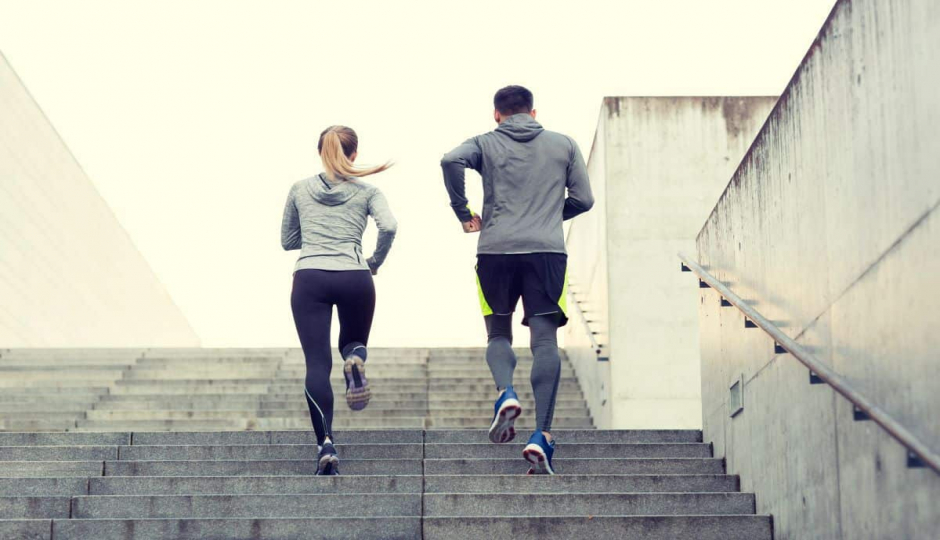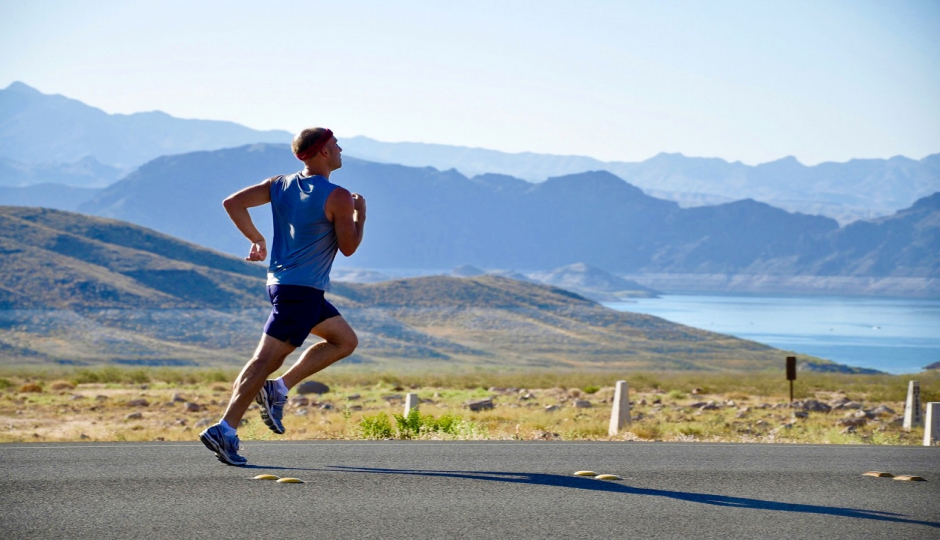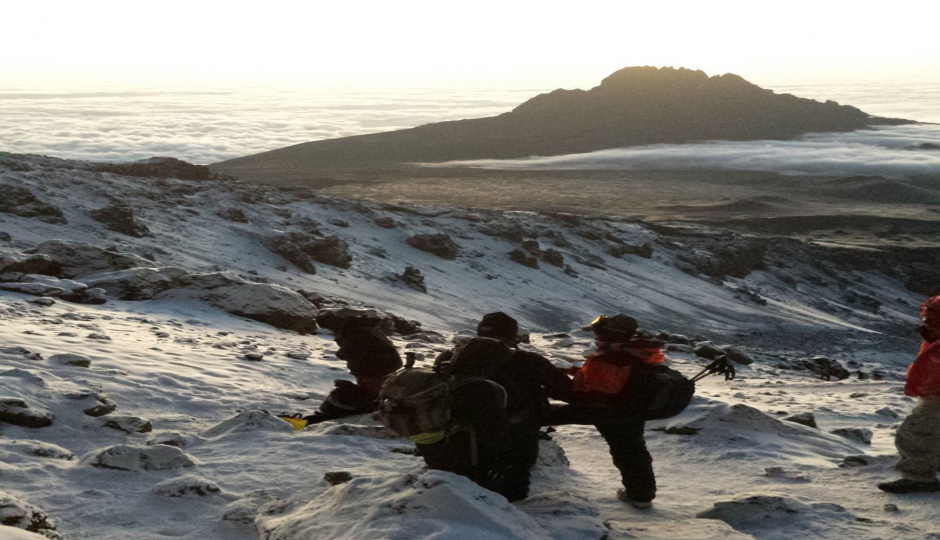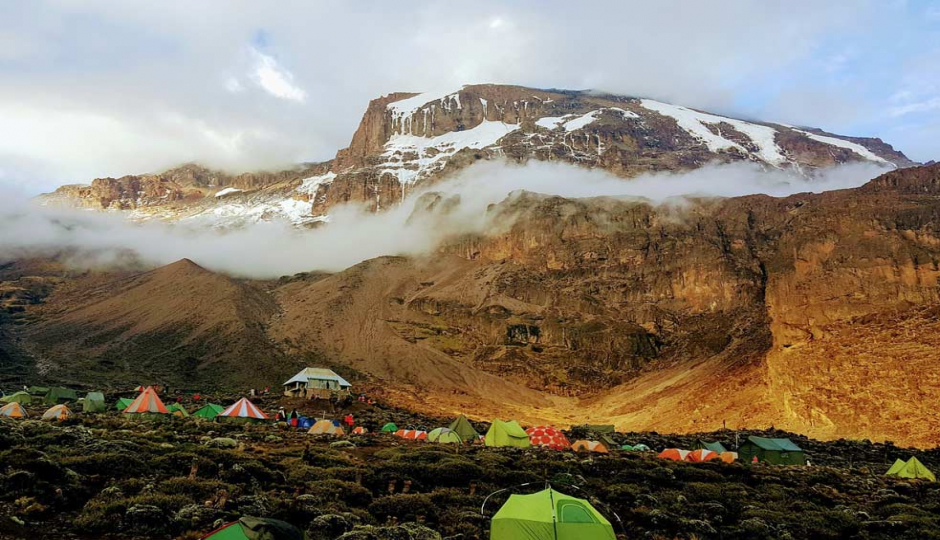







Mount Kilimanjaro is the highest mountain in Africa and hiking to the peak is a challenge that should not be underestimated. With all the information you could possibly gather, added to being physically prepared, one’s chances of reaching the summit are substantially increased. Stamina and mental determination to a great extent will determine whether or not you will be successful in your quest to conquer the Roof of Africa. Being physically prepared for the trek will also greatly contribute to the level of your perseverance, confidence, and personal enjoyment! Just make sure your knees, shoulders, hands, and ankles are limber and that you can go up a day trek hill without too much effort, that you are comfortable with the idea of altitude, that your blood pressure is normal (it will get tested) and that your legs are strong enough to propel you through uneven terrain without it being a challenge.
Start well-hydrated and with enough carbs stored up as muscle fuel, so don't train a week or so before while you carbo-load (which in Tanzania means delicious beer & fruits, and a soft drink that actually just says Glucose). Make sure your lower back is strong and flexible as well. The daily jaunts are rather short, save for the first and last ones. Your red blood cells' ability to carry oxygen (which is inherited and cannot be trained) will have more of an impact on your ability to climb up than anything else you can do. For most people going up, there are no packs to carry beyond your water bottle, some snacks in your pockets, and wet naps.
TRAINING TO CLIMB MOUNT KILIMANJARO
Aerobic training
Aerobic Training (also known as cardio) uses oxygen to adequately meet the energy demands of exercise via aerobic metabolism. The types of exercise that use aerobic metabolism are generally light-to-moderate intensity activities like long-distance jogging, swimming, cycling, and walking.
This differs from anaerobic exercise like high-intensity weight lifting and sprinting which uses anaerobic metabolism to supplement the aerobic system due to increased energy demands. Aerobic exercise builds the cardiovascular system which is key when training to climb Kilimanjaro, as a strong cardiovascular system will help you process limited oxygen in a more efficient way. There is a flip side though. The more fit you are, the harder and faster you can push yourself, and the quicker you think you can ascend Kilimanjaro this is a huge mistake! Going as slow as possible, even when you are in the lower reaches and feeling great, is key to your success on Kilimanjaro. You will hear your porters say Pole Pole, which means Slow Slow in Swahili.
This is possibly the best advice you will get! Your body needs time to acclimatize to high altitude and a strong cardiovascular system can help but not if you have pushed yourself too hard. A good recent example of how a strong cardiovascular system can trick one comes from an accomplished Australian marathon runner who collapsed at Stella Point because he had gone too fast early on in his hike. If you are relatively unfit I recommend setting yourself a 3-6 month training regime where you focus on long-distance walking / running (6-12 km at least three times a week). You can do this on a gym treadmill but remember to set a consistent pace and vary the slope (a slight incline is best). For relatively fit people who already undertake a fair share of cardiovascular exercise we recommend maintaining your regime until 1 month before your climb. At this point we recommend increasing the duration, but not intensity, of your exercises.
Strength Training In addition to aerobic exercise you should also be doing light strength training, particularly for your legs, core, and upper body. In terms of your legs, we suggest the following exercises:
Step aerobics Building the strength of your core muscles (stomach and lower back) and upper shoulder muscles is also important as you will be carrying a lightweight pack for up to 6-7 hours a day.
We recommend the following exercises:
Practice Hiking Climbing Kilimanjaro is in fact just one long hike. The best way to prepare for a long hike is to do a few yourself.
We recommend doing at least two long-distance hikes (over 5 hours). If you can do back-to-back days that would be even better. Doing a few practices hikes as part of your training to climb Kilimanjaro has a few benefits: You get to experience what a 5-hour hike on difficult terrain feels like, going up and down (for most people going down is often more grueling as your knees and joints can take a battering) You get to wear in your boots. There is nothing worse than arriving in Kilimanjaro with unworn-in boots. This can seriously stymie your summit attempt as you will get blisters and sore feet early on in your hike. Mental Stamina So often the thing that gets climbers to the top of Kilimanjaro is their mental stamina.
There will be times during the summit night when you will want to give up and go back down. Being able to dig deep and pull on your mental reserves is so important. Thankfully there are activities to train your mental stamina. Most require some form of pushing your body to the extreme, or to what you think your limits are, and then pushing through to accomplish your goal. We recommend long-distance running, particularly marathons, but half marathons can do the same thing if you are not accustomed to running long distances.
This type of activity really requires one to draw on their mental reserves to get to the finish line. Most people who run marathons will tell you the last mile was all mental. If you can get in that state of mind at least once before Kilimanjaro then you will be perfectly prepared for the final push up the slopes of Kibo.




What is a Reasonable Tanzania Safari Itinerary?
How Do I Plan a Kilimanjaro Climb?
To book your adventure, simply send us an email detailing your desired experience—whether it's climbing Mount Kilimanjaro, going on a Tanzania safari, or enjoying the Zanzibar beach.
We'll promptly respond with all the information you need to finalize your plans. Plus, we offer the convenience of online payment to make the process even smoother.
View Packages